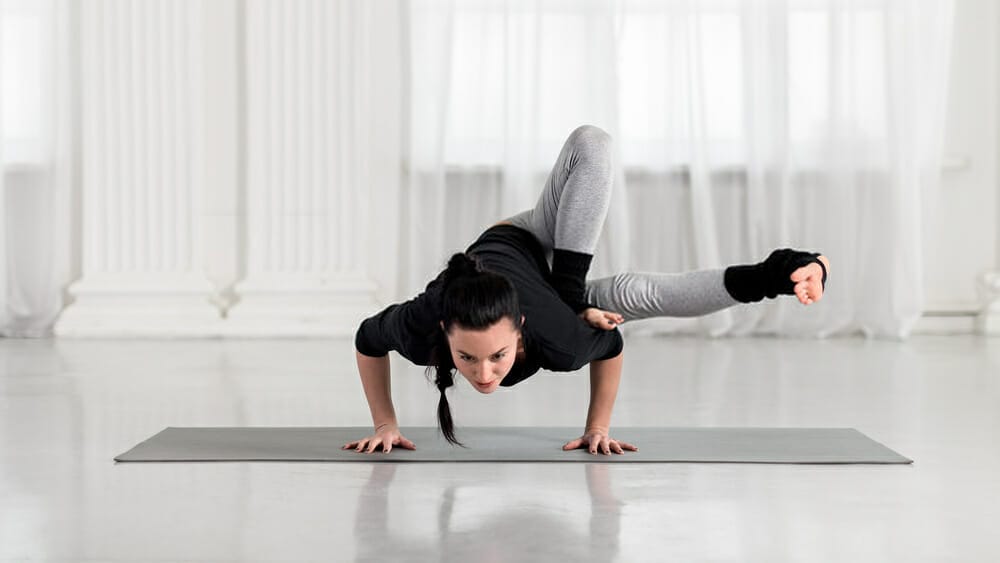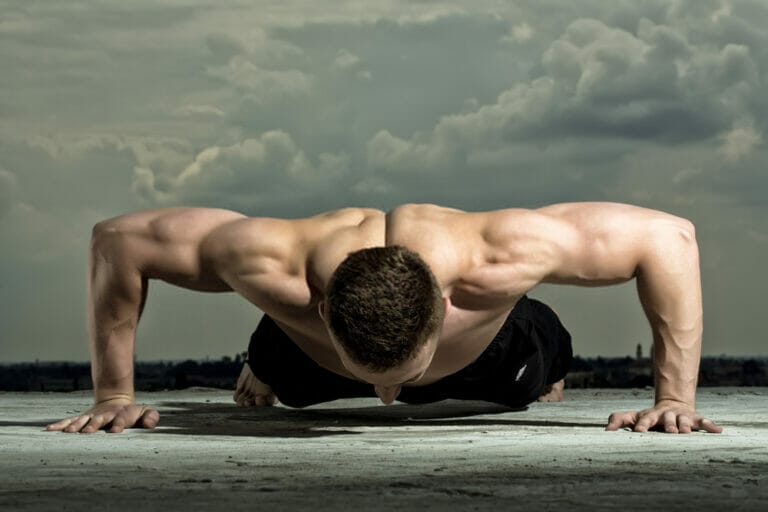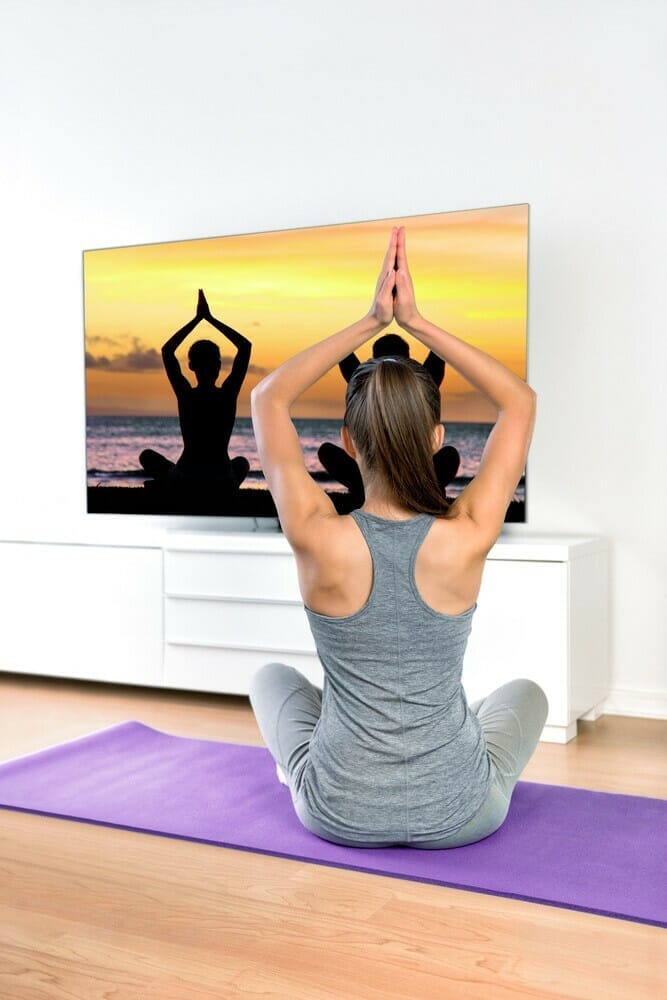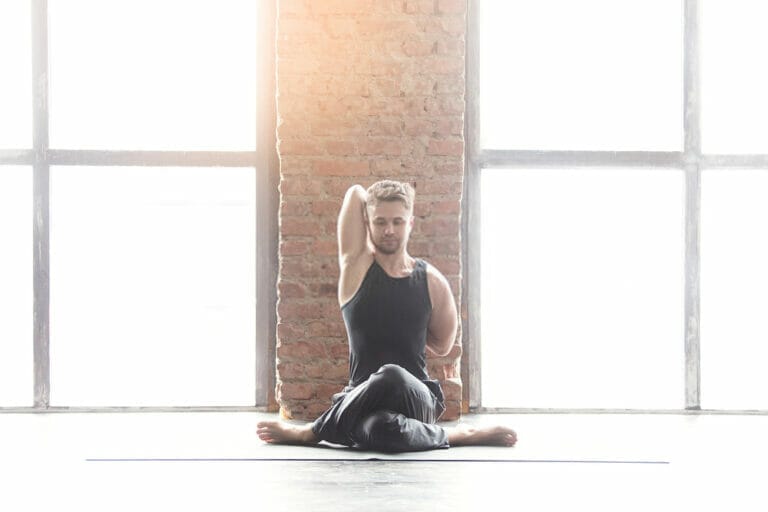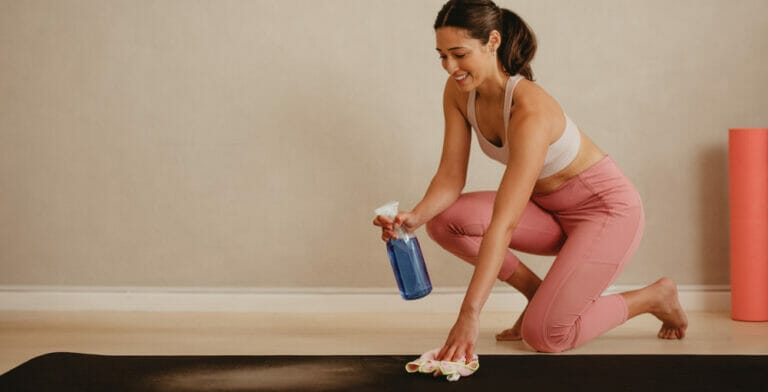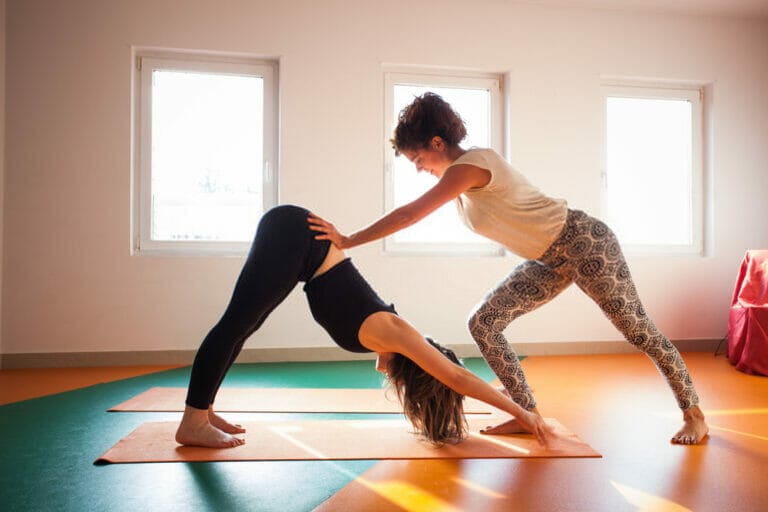Dragonfly (Middle Splits)
Dragonfly is one exercise that can help strengthen our core muscles and improve our stability.
This exercise involves sitting on the floor with the legs stretched out straight in front of us, then bending forward and reaching for both feet with arms.
In this article, I want to talk about how to execute dragonflies and some variations from this position properly.
The Dragonfly pose is also known as the straddle pose or Upavistha Konasana. The name dragonfly (or bird of prey) comes from the similarity of the pose to flying insects or birds of prey. The Dragonfly is both a seated and standing variation.
Level of Difficulty – Advanced
The Dragonfly is a challenging pose to master. It requires strength in the thighs and abdominal muscles, plus a great deal of flexibility in the hips and spine.

Those with great flexibility will easily pull this pose off from the beginning, but beginners will have no such luck. As this is an advanced-level pose, let's learn the risks and precautions!
Risks and Precautions
It is effortless to injure the lower back while practising the Dragonfly pose. The legs must be straight and placed firmly on the floor without moving.
It is also easy to throw your head back or twist your neck as you yank your feet towards yourself. If you suffer from back problems, I would not recommend this pose.
Benefits of the Dragonfly pose
- This pose strengthens the legs, abs and lower back.
- The stretch of the thighs improves circulation, which will help you in toning your thighs.
- This pose stretches the back and arches the spine in all directions, which is essential for anyone with a curved spine.
- It can improve blood circulation, help control weight and decrease cellulite
- Improves flexibility and energy level
- Lessens the need to use drugs during menstruation
- Can help eliminate fatigue and tension in the legs, as well as blood from lower limbs
- Helps improve blood circulation in the pelvis.
- This pose helps relieve menstrual pain, asthma, Sciatica, varicose veins, headaches, swollen ankles and other problems related to poor circulation or leg cramps.
What are the primary muscles targeted in this pose?
The abdominal muscles are the leading players in this pose. However, the lower back muscles are involved, too.
How to do the Dragonfly Pose:
- For this pose, most people will benefit from sitting on a folded blanket or cushion.
- Spread your legs apart from a seated position with your legs outstretched. Let your spine round and your neck relax as you fold forward from your hips. Place your hands in front of you.
- Diffuse sensations around the inner thighs and spine are what you’re looking for.
- Hold the position for 3 to 5 minutes.
- To get out of the posture, push the floor away with your hands and slowly roll up. To release your hips, lean back on your hands and softly draw your legs together.
- Before moving into a counter stance, take a few minutes to experience the effects of the pose.
Tips
- Bend your knees and support them with folded blankets or blocks if sitting on a cushion won’t allow you to tilt your pelvis forward. As a result, your feet may be flat on the floor.
- Try the Half Dragonfly variant if bending the knees doesn’t work for you.
- For beginners, don’t bend your knees and make sure to sit on the floor in a way that your hands support you.
Variations
- Allow your chest and upper torso to rest on the bolsters stacked in front of you.
- Place your elbows in front of you, on blocks or a bolster if necessary, and support your chin with your hands if your neck is sensitive.
- If your feet naturally fall inwards or outwards, use blocks to keep them facing the ceiling so you can experiment with varied feelings.
- To ground your hips, place a meditation cushion or bolsters on your thighs (not your knees).
- With the ability to rotate the chest towards the ceiling, you can fold over one leg to explore diverse sensations in the legs and spine. In that situation, use one hand to support your head while the other shoulder finds a comfortable posture—rep on the opposite side.
- If you’re experiencing groin compression, Half Dragonfly may help: from a Dragonfly position, bring one foot in towards your groin. Then, you can either bend to the side or fold forward.
- Try Dragonfly at the Wall: Lie on your back with your buttocks on the wall, raise your legs and spread them apart. Use a block to support them if this is too much for them.
Who should avoid this pose?

- Those who have a weakened back or are susceptible to back problems
- Those with severe osteoporosis.
- If you need to lower your head, place your forehead on the floor and let your head relax in the posture.
- If you’re experiencing a spinal problem such as Lumbar Spondylosis (a condition caused by arthritis of vertebrae), do not perform this pose.
- If you suffer from Sciatica, avoid this pose.
- If you have a severely curved spine, avoid this pose as well as any other that requires spinal extension and rotation.
Those suffering from a hernia of the groin area should perform this pose with extreme caution, avoiding any pelvis rotation. Likewise, yoga practitioners with severe diabetes should not practice Upavistha Konasana unless under the supervision of a trained teacher.
Supportive poses
You can perform several poses so that coming into the middle splits becomes easy. They are –
- Butterfly Fold
- Frog Fold
- Forward Fold
- Wide-Legged Child’s Pose
Conclusion:
The Dragonfly pose is not advisable for yoga beginners due to the ill effects of this extreme posture.
However, if practised under the guidance of a trained yoga trainer and with some modifications, this pose is beneficial.
It is advisable to check with your doctor if you experience any physical ailments before beginning this practice.
So, now you have read about the basics of the Dragonfly pose. Get ready for a fantastic experience!

